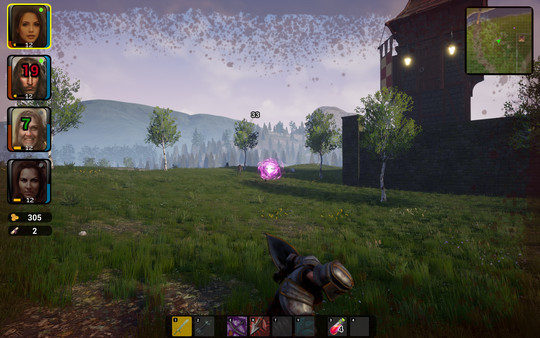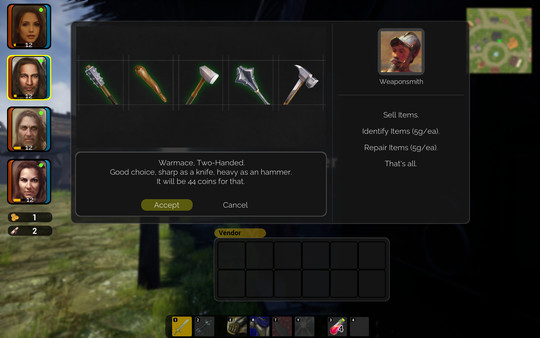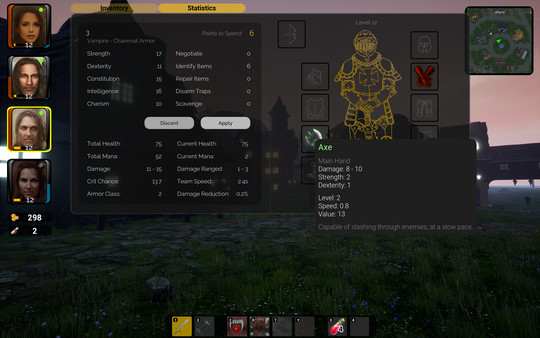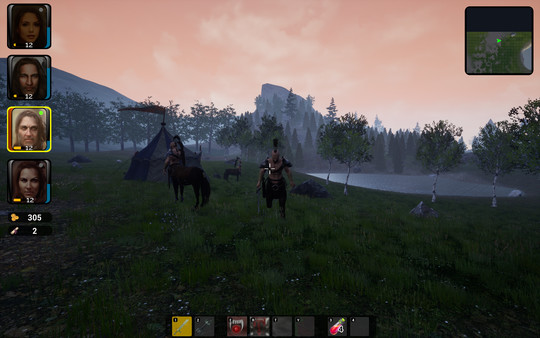Lorcan wrote:I'm most worried about is that beta-testers seems scared, giving it up quickly because they cannot understand how to play it (you need to read carefully and explore a lot).
You need to take some other games as reference when playing their tutorials. I think it's quite clear, but it might become a bit fuzzy if you have too many other things in your head. I am not an expert, but as a gamer, tutorial is very important to show basic to intermediate commands, leaving the advanced stuff for the player to try it out by applying all the notion one learned with basics and intermediate.
For example, in Ori and the Blind Forest, you obviously will move your character with arrow keys, but you have generally 2 of those, for gaming keyboards have ASWD keys usually tied for that function too. Considering your public is likely to be these which uses ASWD, when they get control over their character, display ASWD hint for movement, and 'use your mouse to look around'. In Ori, one the first commands is showing how to jump, then to jump higher. Hint would prompt when reaching a point where to use it. Same for some abilities you found. A very brief description of its effect and how to use it. And it would usually prompt you or require you to use that ability right away to move from the place, and make players use each of these abilities every now and them to keep going on the main arc or so side-quests or free exploration. I remember dying a lot in a place in first Ori game because there was a command I simply forgot I had, because I had not used it for a while and it was not really required a lot either.
But in a game like yours, it requires more tinkering with words and proper writing, describing things so players don't feel like solving riddles only to execute basic commands. In Mass Effect, you were taught how to move, look around, to get into cover (big signaling arrows explained where to go and what to do), how to keybind abilities, your companions' abilities, how to move them to specific points. You had that in game tutorial, but you also had Menu tutorial, which was a more detailed explanation of the game mechanics. You can also add some manner of codex, for whatever new thing player encounters in their path, some information is added to the codex. For Lore fans, that's nice and sometimes help giving directions on how the world building actually works.
Commands must have some manner of customization, easy key bindings. That's really mandatory, imho.
If you have weapons with different effectiveness and traits, it must be explained somewhere, like a local armsmaster, also considering said master's background, if too experienced or not that much. Depending on how you build that character, he'll relay general info, or detailed info, or just something that prompts your reasoning. Example:
"Hello there! I am trying to get these weapons ready for an important delivery. Only Lances! I am not a fan of them, but their reach is awesome! Quite nice when you find those awful gargoyles!" And with this information, you'll likely conclude it's a good weapon to be used against flying fiends at close range. If weapons that slash are mechanically different from those that crunch or piercer, that must be clear, just like light to heavy armor, or different magical contraptions.
You need to be creative and concise at explaining things in-game, and have a more detailed tutorial through menu access (or something your characters can find easily, like in a save point or a floating orb, whichever works best), so you cover a larger group of players' preferences and limitations, instead of hoping they'll understand only one way or another, if you don't give them the choice. Remember, choice, customization, this is very important design.
Writing is also extremely important for questing. It is not good forcing players to have to talk with every single npc in the game. It takes away their choice to go on faster and try to work out things from their deduction by smaller bits of information, and, whenever possible, not to make scripted quests only to unlock through talking, except for very specific situations, but nothing like finding an odd tree with a hidden entrance in its roots, but you cannot enter it because you have not spoken with a random guy at the last and almost invisible hut somewhere. And if you think on replayability, where people already know what to do, that's one thing to keep in mind. The thing is having choices as how to play, and not a single cemented formula.
I need to get back to work now. We can talk more later.






